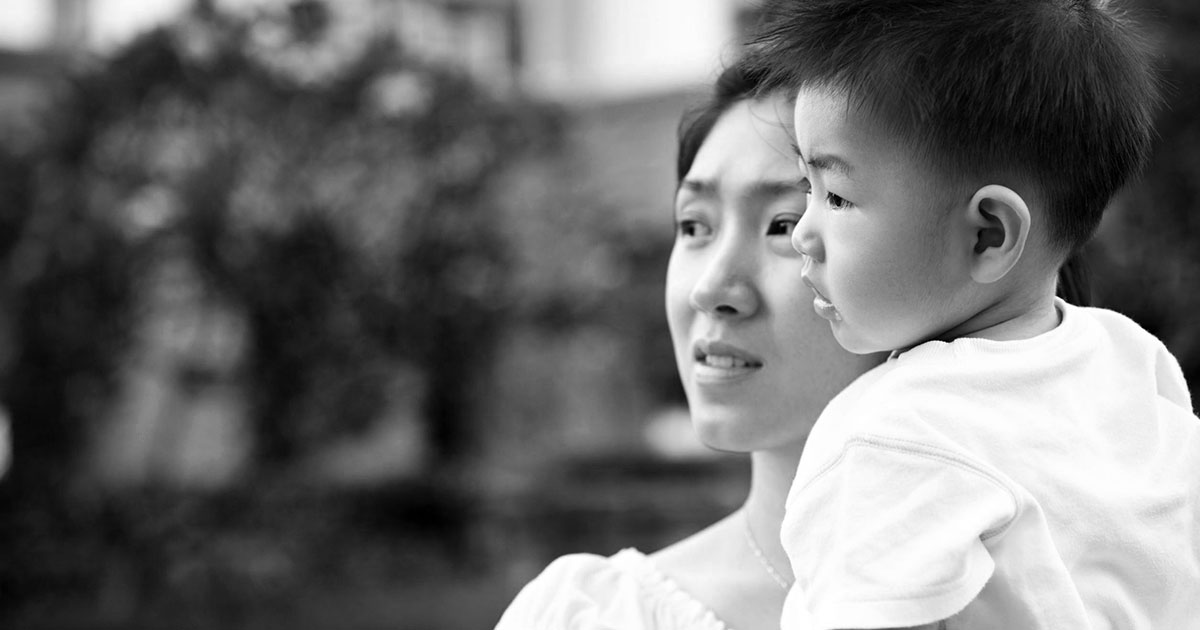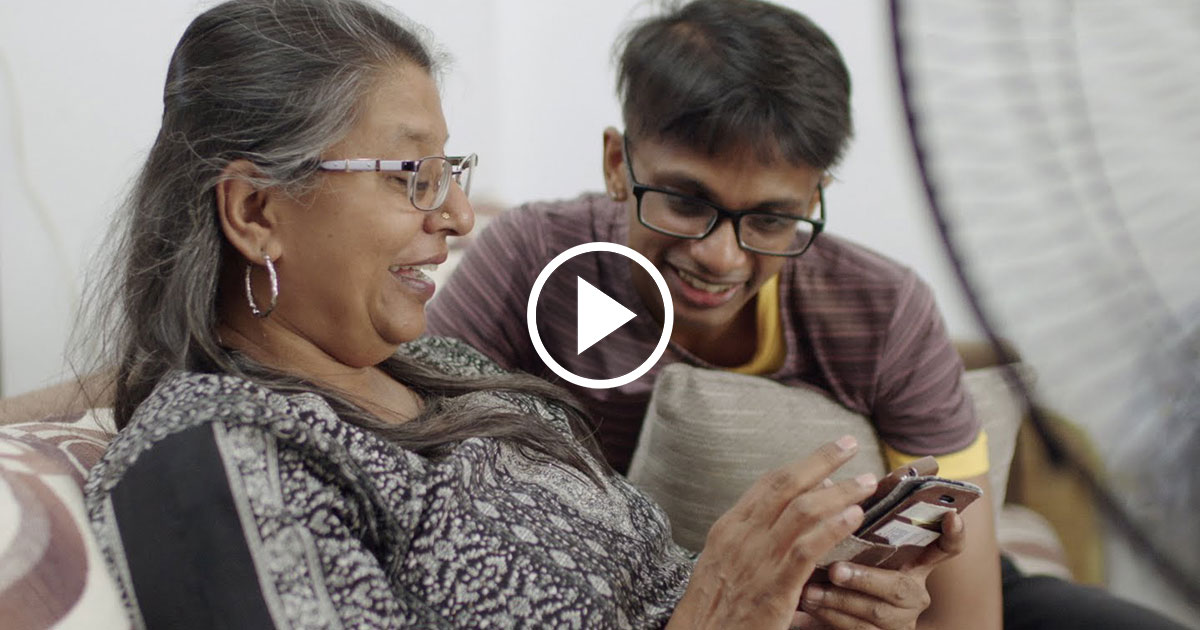
Speaking up for stay-at-home mothers
In less than a week, the world will be observing the International Women’s Day. This year, we at the Political Studies for Change (KPRU) think that it’s time to take stock of the state of stay-at-home mothers in Malaysia.
Nowadays, while there are women who are working mothers, there are also women who are being traditional stay-at-home mothers, taking care of their children and do the household chores, and not taking up a job with income. Therefore, their husbands, being fathers, would be the sole breadwinners of the families.
However, how many of us actually understand the needs of the stay-at-home mothers?
Typically, while stay-at-home mothers have been labeled as the ones who are having the duty to manage the household affairs, their contributions are being taken for granted.
It is being assumed that being a stay-at-home mother does not do much help, as the job does not generate income for the family. However, their job is actually not easy – in fact, they are playing an important role in supporting their families, despite not contributing on the financial side.
Yet their families tend to underestimate their workload as well as their pressure and tiredness. We might not realise that they are not only unpaid but also typically having no day off, while employed people mostly have one or two days off per week.
According to the Labour Force Survey Report 2015 (on those aged 15 to 64 years old), the overall labour force participation rate was 67.9 percent (14,518,000 people) with 6,869,900 being outside the labour force, while the labour force participation rate among females was 54.1 percent.
According to the Report on Key Findings: Fifth Malaysian Population and Family Survey [MPFS-5] 2014 by the National Population and Family Development Board (LPPKN), among married women aged 15-59 years (7,644 survey samples out of estimated population of 8,680,200) there were 46.5 percent who were working, 42.4 percent who have stopped working, and 11.1 percent who never worked.
%
Working mom
%
Stopped working
%
Never worked
Among those who stopped working, 32.4 percent quit because of childcare problems, 16.4 percent quit because of marriage, and 11.7 percent quit because of following spouse on transfer. Even among working women, there were 18.7 percent of them having problems in work-life balance.
These figures show that stay-at-home mothers still consist of a largely significant section of the society, and would require attention. It is unfair for anyone, especially their husbands, to simply slam them for being “unemployed” or “jobless” while stay-at-home mothers have to maintain the household day and night while taking care of their children virtually 24 hours a day.
On the other hand, the husband, being the breadwinner, having work during his office hours, tends not to share any meaningful responsibilities with his wife, with the excuse of “being tired after work”.
Yes, it can be really tiring after working for eight hours or so, but many have not realised the very details of the tasks done by a stay-at-home mother – feeding her children, teaching or disciplining her children, ensuring the safety of her children, cleaning up the house, cooking for the family, and so on. These can be even more tiring than what her husband does in his workplace.
Therefore, we would like to propose a few policies to assist these stay-at-home mothers in their daily lives.

Mental health issues
First and foremost, stay-at-home mothers are not immune to emotional or mental health problems, as they are also working people, except that they are working at home with no monthly salary, no annual increment, and not entitled to annual leaves. This would be further complicated by the fact that many of them do not even have a weekly day off.
However, due to negligence by others, their stress and emotional problems tend to be unseen or unaccepted. As they accumulate their stress and emotional problems, this may actually further develop into mental health problems.
Mental health describes a broad range of mental and emotional conditions. According to the 2015 National Health and Morbidity Survey (NHMS) by the Health Ministry, among the 14,362 of adult respondents (aged 16 and above) surveyed (with 3,161 refused and 3,417 ineligible for being unable to read and understand Malay and English), there were 29.2 percent of them having mental health problems, and those at higher risks were females, younger adults, “other bumiputera”, and those from the low-income families. This is higher than 10.7 percent in 1996.
In addition, according to Global Burden of Disease (GBD) by Institute for Health Metrics and Evaluation in 2015, it showed that three out of the top 10 health problems causing the most disabilities were mental illness, which were depressive disorders (4th), anxiety disorders (8th) and schizophrenia (10th). Depressive disorders were included in the top 10 causes of disabilities and deaths combined in Malaysia, ranking 9th.
Generally speaking, the pressure among women is higher due to a variety of responsibilities that must be shouldered. Stay-at-home mothers are confronted with a stressful life. They spend most of their time looking after their children and managing daily house works.
Because of this, they have no quality time reserved purely for themselves, not even regular weekend breaks, and they have limited social activities, therefore hardly able to make new friends. Their lack of communication and interaction with others may lead them to risk of mental problems.
Mental health problem of stay-at-home mothers is a serious issue that should be addressed, as this occasionally resulted in suicide attempts.
In March 2015, a mother attempted to commit suicide by jumping from the fifth floor of an apartment in Taman Setia Jaya, together with her 10-month-old baby. In October 2015, a new mother fell to her death from the 16th floor of a condominium in Bangsar South, just 10 days after she gave birth to her first child.
In July 2016, a woman who was separated with her husband killed her two sons (respectively aged seven and four), before hanging herself in the toilet at home. In August 2016, a woman who suffered from depression and had undergone psychiatric treatment, dragged her three-year old son and jumped from the 32nd floor of an apartment in Bukit Jalil.
All these cases alerted us the severity of the issue. Such tragedies should be reduced, if not completely prevented, if it is taken seriously. Immediate action is warranted for this.
Firstly, we need to address their emotional problems and mental illness, if any. We need to deal with this by helping them to get treatment, which is counselling and probably medication as well. In the meanwhile, always listen to them and do not jump to conclusions while listening.
In March 2015, a mother attempted to commit suicide by jumping from the fifth floor of an apartment in Taman Setia Jaya, together with her 10-month-old baby. In October 2015, a new mother fell to her death from the 16th floor of a condominium in Bangsar South, just 10 days after she gave birth to her first child.
In July 2016, a woman who was separated with her husband killed her two sons (respectively aged seven and four), before hanging herself in the toilet at home. In August 2016, a woman who suffered from depression and had undergone psychiatric treatment, dragged her three-year old son and jumped from the 32nd floor of an apartment in Bukit Jalil.
All these cases alerted us the severity of the issue. Such tragedies should be reduced, if not completely prevented, if it is taken seriously. Immediate action is warranted for this.
Firstly, we need to address their emotional problems and mental illness, if any. We need to deal with this by helping them to get treatment, which is counselling and probably medication as well. In the meanwhile, always listen to them and do not jump to conclusions while listening.

Supporting mothers with counselling allowance
With counselling, a person may speak up their problems in a confidential and dependable environment to their respective counsellors. A counsellor is trained to listen with empathy. They can help you deal with any negative thoughts and feelings you have. Through the treatment, stay-at-home mothers may find it helpful to speak about their concerns or feelings with others.
Unfortunately, many stay-at-home mothers are unable to have access to counselling services due to high counselling fees and accessibility of counselling service in their area.
Therefore, we suggest that the government should come out with a counselling allowance for stay-at-home spouses. For instance, the counselling allowance will enable recipients to get counselling twice a year for free. Such initiative will definitely encourage stay-at-home mothers to seek for counselling when in need.
Currently, we do not have enough psychiatrists in Malaysia. According to Psychiatric and Mental Health Services Operational Policy 2011, all specialist hospitals shall have a Psychiatric Department or unit with resident psychiatrist/s. These units shall provide general psychiatric services (eg. outpatient clinics, inpatient beds and hospital-based community psychiatric services).
While the World Health Organisation (WHO) recommends having one psychiatrist for every 10,000 people (i.e ratio of 1:10,000), we are far behind that, having a ratio of only 0.76:100,000 as per year 2014. In the same year, the ratio between social workers (in mental health sector) with the population was only 0.84:100,000, and as for psychologist, the ratio was only 0.89:100,000.
According to Health Minister Dr. S Subramaniam, as of Sept 28, 2016, there were only 360 registered psychiatrists in Malaysia (190 in government hospitals and 170 in private hospitals), and out of these only 13 were clinical psychiatrists.
Addressing the shortage of psychiatrists
We need to address the shortage of psychiatrists and psychologists, in order to meet the psychological needs of stay-at-home spouses. While it can be very challenging to recruit more students (among medical graduates) for a psychiatry degree, we would also suggest trying out telemedicine, or for this case, it would be “telepsychiatry”, so that existing psychiatrists may make use of such technology to provide care for a remote patient without actually meeting them.
While this does not increase supply, this helps to meet demands more efficiently and cut down on bureaucratic red tapes. This is because there are many occasions where the patient does not actually need to personally meet the doctor, but only need telecommunication, such as a mere diagnosis and counselling, and also follow-ups after treatment.
At the same time, we would need to mobilise social workers and psychologists, who are both non-qualified in medicine, to provide basic counselling services and some other necessary social concern work for stay-at-home mothers in need.
This is to free up the psychiatrists, who are qualified in medicine, so that they can focus more of their own resources on mental patients who really need medical care. We would need to work with relevant non-governmental organisations (NGO) in the field to encourage those in need, including stay-at-home mothers, to seek help from social workers, psychologists, and psychiatrists.
When people in need are able to reach out to psychologists, psychiatrists, and social workers via telecommunication, it is not only usually efficient, but also helps to protect their own identity. Such a privacy and confidentiality is needed because they can be easily stigmatised by the society.

Stay-at-home mothers’ savings for retirement
Besides that, we need to take note that stay-at-home mothers tend not to accumulate enough savings for retirement. Over the years, women’s wing of political parties in this region has called for more support for stay-at-home mothers with little savings in formal retirement protection schemes like Employees Provident Fund (EPF) accounts, Central Provident Fund (CPF) accounts and the like.
They urged their husbands and adult working children to take the “sensible approach” and make regular voluntary top-ups to the retirement accounts of stay-at-home mothers. Think tanks and public policy institutes even suggested a mandatory system where working spouses make automatic contributions to the retirement accounts of non-working spouses.
The federal government should consider such idea and implement a similar policy, making it mandatory in Malaysia. The EPF provides retirement benefits for members through management of their savings in an efficient and reliable manner.
Stay-at-home spouses should be having an EPF account where they can enjoy the attractive interest rates paid, as typical employees. Under the current system, they can actually voluntarily join the EPF scheme by self-contribution, just as domestic servants and self-employed people. However, we would suggest making it mandatory for their working family members to contribute a specific amount of money into the stay-at-home spouses’ account every month.
Sick leave for family care
Everyone may fall sick anytime, and stay-at-home spouses are of course not an exception. However, it can be a headache when a stay-at-home mother falls sick – should she just take a rest on the day when her husband or children fall sick, or should she continue her chores as usual?
Since there are calls for paternal leave as a complement to the maternal leave (and there are a few private companies offering this for their male employees), we would also suggest that the law should allow working spouses to take sick leave, in case their stay-at-home spouse falls sick. With this, the working spouse may utilise the leave to stay at home and take care of their sick spouse, and take over the duties at home until the sick spouse recovers.

Self-employed benefit for stay-at-home mothers
While currently each eligible employee is being protected by the Social Security Organisation (Socso) from work-related injuries and illness, the government is pushing out to extend coverage for self-employed people through the proposed Self-Employed Act, beginning from taxi drivers, in the coming Parliament session.
Therefore, we would suggest extending Socso coverage for stay-at-home spouses as well, since they are of no exception to injuries at home. For this purpose, we would suggest that the working spouses and their respective employers be required to contribute slightly more than the current total contribution rate. From then, in case the stay-at-home spouse gets injured while carrying out household tasks, they may make claims from Socso for medical treatment.
Other than implementing laws and policies, we also believe that education is the key. Rather than merely enforcing laws, we should also seek to educate the public and raise awareness about the responsibilities and price to pay for having a family, as it is not a typical workplace which we need to govern with labour laws.
After all, the understanding from family and friends is vital for stay-at-home spouses. Family members must appreciate their efforts in running the family. We believe that all the stay-at-home spouses should be given some time for themselves regularly, so that they will have more personal time to do whatever they like without worrying about the family.
However, despite having such discussions all over the world, it might not be realistic to implement a mandatory, statutory day off and working hours for stay-at-home spouses, as the job scope would come into question.
Furthermore, a family should be full of love and understanding, rather than being governed with potentially inhumane and inflexible laws being set by outsiders. We believe that among the root cause of problems faced by stay-at-home spouses is the lack of understanding by their family members, especially their working spouses.
Therefore, knowing that for decades there have been campaigns (mostly advertisements or public service announcements) to raise awareness about crime, smoking, drinking, drug addiction, dengue and sexually transmitted disease, we believe that we need similar campaigns to make the public realise how heavy the responsibility of a stay-at-home spouse is.
We should let the public understand how much a full-time housewife needs to sacrifice for her family, and even the damage inflicted by an irresponsible husband.
As policy makers in a democracy cannot make too much invasion into the people’s family space, we can only use education and awareness so that when husbands realise how hard their wives’ job is, they would consider sharing some responsibilities with their wives, and possibly giving a weekly day off as in most workplaces.
When couples manage to come into a common understanding and make compromises, or better, reaching a win-win solution, we believe that it will solve many family problems, not only problems faced by stay-at-home spouses, but also other problems such as child abuse, domestic violence, divorce and so on.
We hope that with at least some of these policies implemented, everyone would appreciate the responsibilities and contributions being made by stay-at-home parents, so that they are simply not treated as some sort of free-of-charge maids or servants. We want working spouses to be more responsible towards their stay-at-home spouses.
References:
- Labour Force Survey Report 2015
- Report on Key Findings
- 2015 National Health and Morbidity Survey (NHMS) by the Health Ministry
- Global Burden of Disease (GBD) by Institute for Health Metrics and Evaluation, 2015
OOI HENG, ELIJAH KHOR & JIA YING are with Political Studies for Change (KPRU or Kajian Politik untuk Perubahan).
Do you find this article useful?















